Abstract
The polarity of fucoid eggs is fixed either when tip growth starts or a bit earlier. A steady flow of calcium ions into the incipient tip is thought to establish a high calcium zone that is needed for its localization and formation. To test this hypothesis, we have injected seven different 1,2-bis(o-aminophenoxy)ethane-N,N,N',N'-tetraacetic acid (BAPTA)-type calcium buffers into Pelvetia eggs many hours before tip growth normally starts. Critical final cell concentrations of each buffer prove to block outgrowth (as well as cell division) for up to 2 weeks. This critical inhibitory concentration is lowest for two buffers with dissociation constants or Kd values of 4-5 x 10(-6) M and increases steadily as the buffers' Kd values shift either below or above this optimal value to ones as low as 4 x 10(-7) M or as high as 9.4 x 10(-5) M. To analyze these results, we have derived an equation (based on the concept of facilitated diffusion) for the effects of diffusable calcium buffers on steady-state calcium gradients. The data fit this equation quite well if it is assumed that cytosolic free calcium at the incipient tip is normally kept at about 7 microM and, thus, far above the general cytosolic level.
Full text
PDF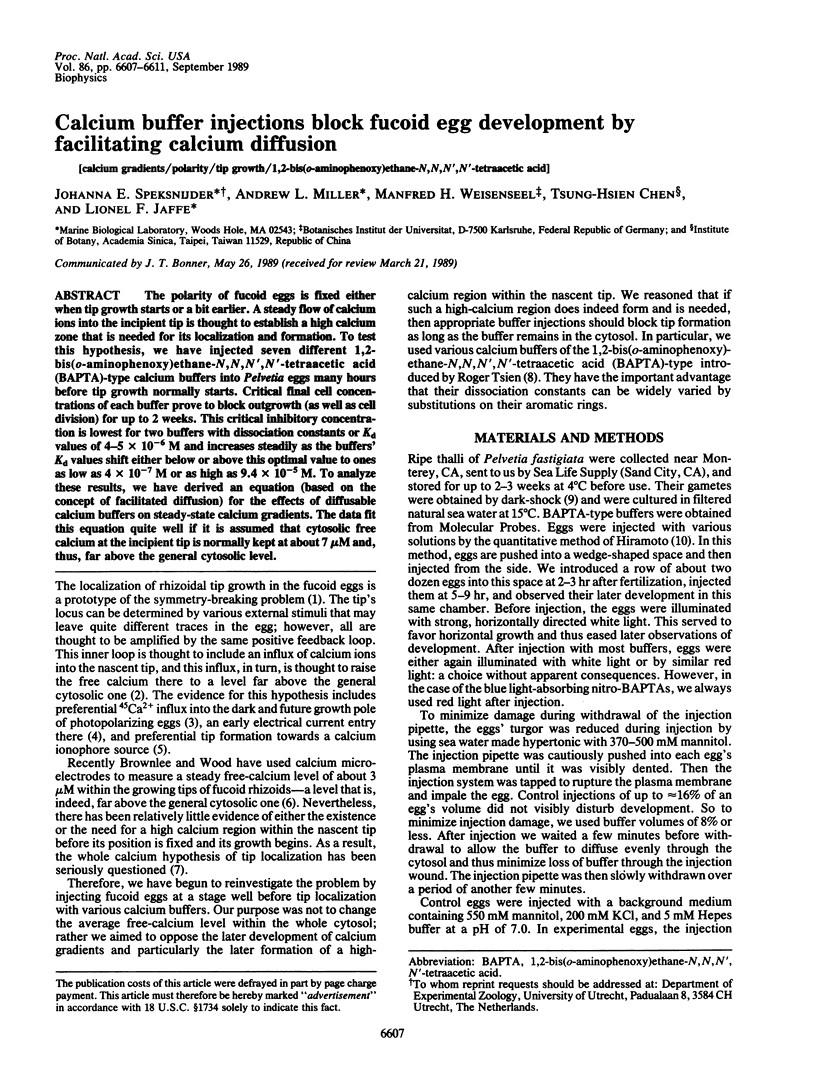
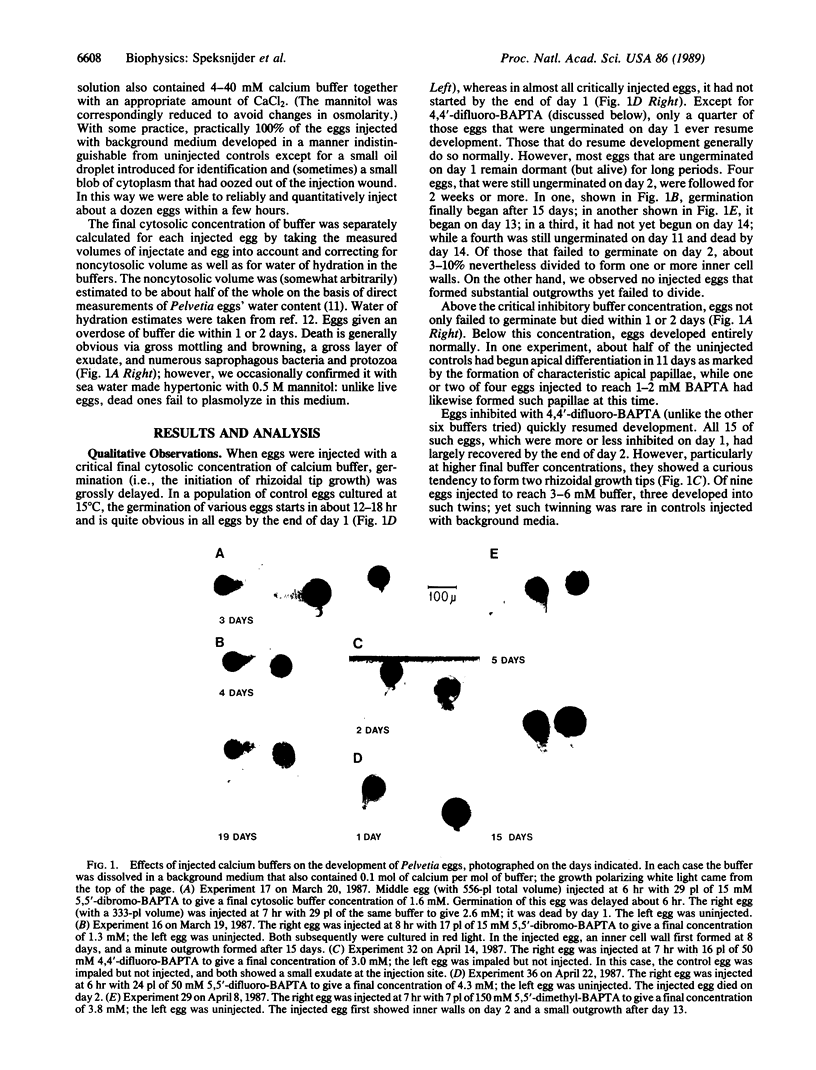
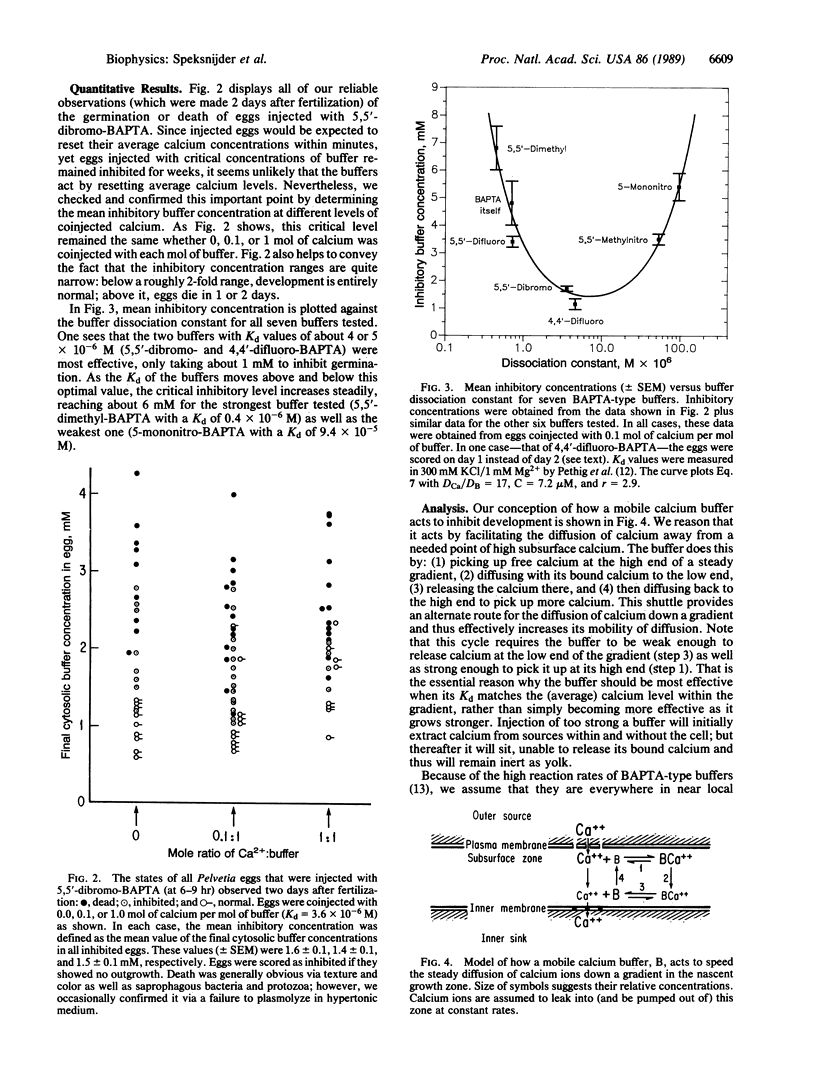
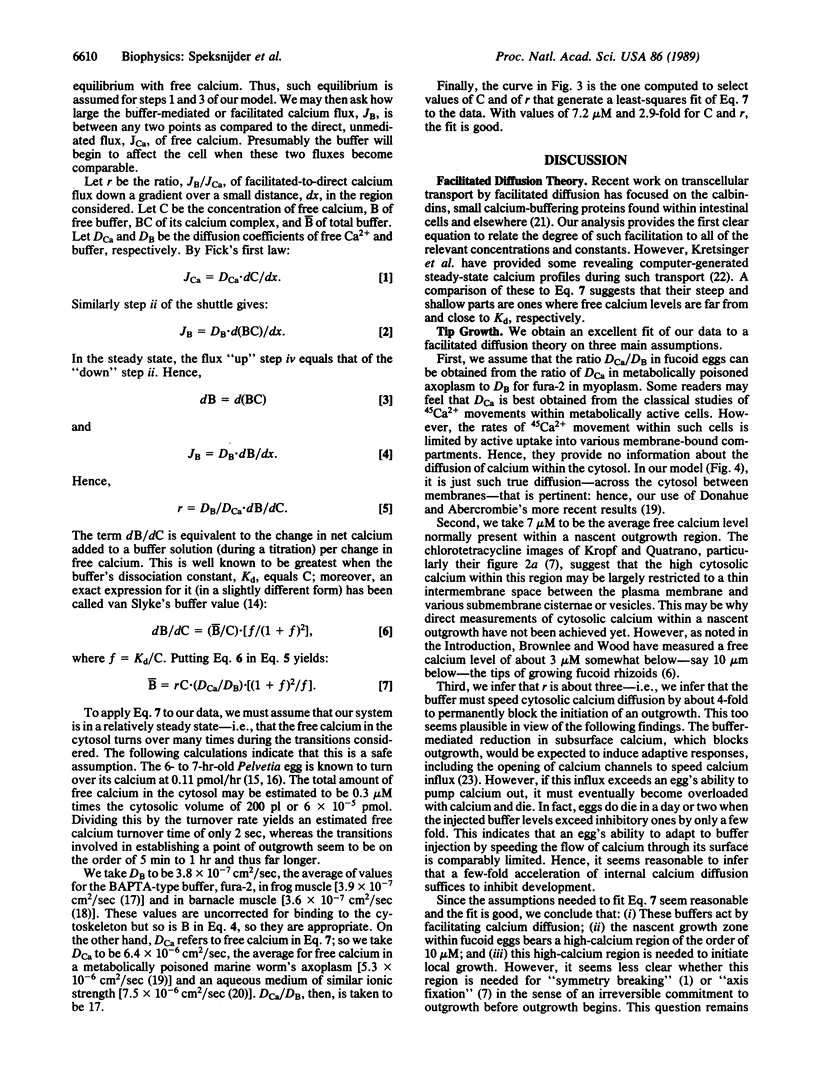
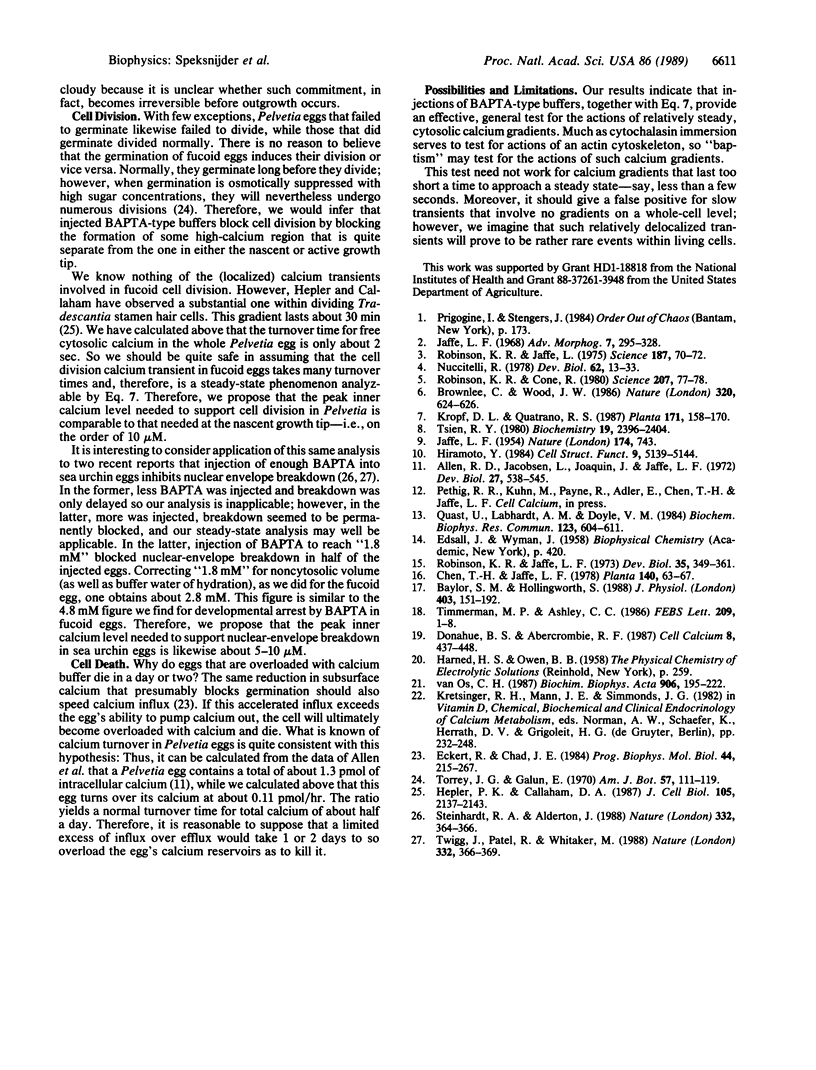
Images in this article
Selected References
These references are in PubMed. This may not be the complete list of references from this article.
- Allen R. D., Jacobsen L., Joaquin J., Jaffe L. F. Ionic concentrations in developing Pelvetia eggs. Dev Biol. 1972 Apr;27(4):538–545. doi: 10.1016/0012-1606(72)90191-1. [DOI] [PubMed] [Google Scholar]
- Baylor S. M., Hollingworth S. Fura-2 calcium transients in frog skeletal muscle fibres. J Physiol. 1988 Sep;403:151–192. doi: 10.1113/jphysiol.1988.sp017244. [DOI] [PMC free article] [PubMed] [Google Scholar]
- Donahue B. S., Abercrombie R. F. Free diffusion coefficient of ionic calcium in cytoplasm. Cell Calcium. 1987 Dec;8(6):437–448. doi: 10.1016/0143-4160(87)90027-3. [DOI] [PubMed] [Google Scholar]
- Eckert R., Chad J. E. Inactivation of Ca channels. Prog Biophys Mol Biol. 1984;44(3):215–267. doi: 10.1016/0079-6107(84)90009-9. [DOI] [PubMed] [Google Scholar]
- Hepler P. K., Callaham D. A. Free calcium increases during anaphase in stamen hair cells of Tradescantia. J Cell Biol. 1987 Nov;105(5):2137–2143. doi: 10.1083/jcb.105.5.2137. [DOI] [PMC free article] [PubMed] [Google Scholar]
- Jaffe L. F. Localization in the developing Fucus egg and the general role of localizing currents. Adv Morphog. 1968;7:295–328. doi: 10.1016/b978-1-4831-9954-2.50012-4. [DOI] [PubMed] [Google Scholar]
- Nuccitelli R. Oöplasmic segregation and secretion in the Pelvetia egg is accompanied by a membrane-generated electrical current. Dev Biol. 1978 Jan;62(1):13–33. doi: 10.1016/0012-1606(78)90089-1. [DOI] [PubMed] [Google Scholar]
- Quast U., Labhardt A. M., Doyle V. M. Stopped-flow kinetics of the interaction of the fluorescent calcium indicator Quin 2 with calcium ions. Biochem Biophys Res Commun. 1984 Sep 17;123(2):604–611. doi: 10.1016/0006-291x(84)90272-9. [DOI] [PubMed] [Google Scholar]
- Robinson K. R., Cone R. Polarization of fucoid eggs by a calcium ionophore gradient. Science. 1980 Jan 4;207(4426):77–78. doi: 10.1126/science.207.4426.77. [DOI] [PubMed] [Google Scholar]
- Robinson K. R., Jaffe L. F. Ion movements in a developing fucoid egg. Dev Biol. 1973 Dec;35(2):349–361. doi: 10.1016/0012-1606(73)90029-8. [DOI] [PubMed] [Google Scholar]
- Robinson K. R., Jaffe L. F. Polarizing fucoid eggs drive a calcium current through themselves. Science. 1975 Jan 10;187(4171):70–72. doi: 10.1126/science.1167318. [DOI] [PubMed] [Google Scholar]
- Steinhardt R. A., Alderton J. Intracellular free calcium rise triggers nuclear envelope breakdown in the sea urchin embryo. Nature. 1988 Mar 24;332(6162):364–366. doi: 10.1038/332364a0. [DOI] [PubMed] [Google Scholar]
- Timmerman M. P., Ashley C. C. Fura-2 diffusion and its use as an indicator of transient free calcium changes in single striated muscle cells. FEBS Lett. 1986 Dec 1;209(1):1–8. doi: 10.1016/0014-5793(86)81073-0. [DOI] [PubMed] [Google Scholar]
- Tsien R. Y. New calcium indicators and buffers with high selectivity against magnesium and protons: design, synthesis, and properties of prototype structures. Biochemistry. 1980 May 27;19(11):2396–2404. doi: 10.1021/bi00552a018. [DOI] [PubMed] [Google Scholar]
- Twigg J., Patel R., Whitaker M. Translational control of InsP3-induced chromatin condensation during the early cell cycles of sea urchin embryos. Nature. 1988 Mar 24;332(6162):366–369. doi: 10.1038/332366a0. [DOI] [PubMed] [Google Scholar]
- van Os C. H. Transcellular calcium transport in intestinal and renal epithelial cells. Biochim Biophys Acta. 1987 Jun 24;906(2):195–222. doi: 10.1016/0304-4157(87)90012-8. [DOI] [PubMed] [Google Scholar]



